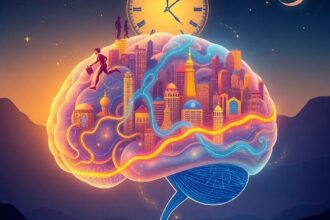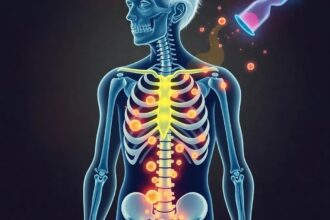Exploring how timed light exposure regulates circadian rhythms, impacts hormones like melatonin and cortisol, and offers therapeutic benefits for conditions such as insomnia and seasonal affective disorder.
Discover how the timing of light exposure can optimize hormonal health, improve sleep, and enhance longevity through the science of chrono-phototherapy.
Introduction to Chrono-Phototherapy
Chrono-phototherapy is an emerging field that explores how the timing of light exposure can influence our hormonal health and overall well-being. Light, particularly natural light, plays a crucial role in regulating our circadian rhythms, which are the internal clocks that govern our sleep-wake cycles, hormone production, and other physiological processes.
The Role of Light in Circadian Rhythms
Our circadian rhythms are primarily regulated by the suprachiasmatic nucleus (SCN) in the brain, which responds to light signals received through the eyes. When light enters the retina, it triggers a cascade of biochemical reactions that influence the production of key hormones such as melatonin and cortisol. Light is the most powerful zeitgeber, or time-giver, for our circadian system,
explains Dr. Phyllis Zee, a leading researcher in sleep medicine at Northwestern University.
Impact on Hormonal Health
Melatonin, often referred to as the ‘sleep hormone,’ is produced in response to darkness and helps regulate sleep. Cortisol, on the other hand, is a stress hormone that follows a diurnal pattern, peaking in the morning to help us wake up and gradually declining throughout the day. Disruptions in light exposure, such as excessive artificial light at night, can lead to imbalances in these hormones, contributing to conditions like insomnia, seasonal affective disorder (SAD), and even metabolic disorders.
Therapeutic Applications of Chrono-Phototherapy
Chrono-phototherapy has shown promise in treating a variety of conditions. For instance, light therapy devices that mimic natural sunlight have been effectively used to treat SAD, a type of depression that occurs during the winter months. Timed light exposure can reset the circadian clock and improve mood in individuals with SAD,
notes Dr. Michael Terman, a pioneer in light therapy research at Columbia University.
Practical Tips for Optimizing Light Exposure
To harness the benefits of chrono-phototherapy, it’s important to align your light exposure with your natural circadian rhythms. Here are some practical tips:
- Get morning sunlight: Spend at least 20-30 minutes outside in the morning to help reset your circadian clock.
- Limit artificial light at night: Reduce exposure to blue light from screens and use dim, warm lighting in the evening.
- Consider light therapy devices: For those with limited access to natural light, light therapy boxes can be a useful tool.
The Future of Chrono-Phototherapy
As research in chrono-phototherapy advances, there is growing interest in integrating it with other chrono-based therapies, such as timed nutrition and exercise, for comprehensive health optimization. The future of health lies in understanding and leveraging the timing of our biological processes,
says Dr. Satchin Panda, a leading expert in circadian biology at the Salk Institute.
Conclusion
Chrono-phototherapy offers a promising avenue for improving hormonal health, enhancing sleep, and promoting longevity. By understanding and optimizing our light exposure, we can take proactive steps toward better health and well-being.




